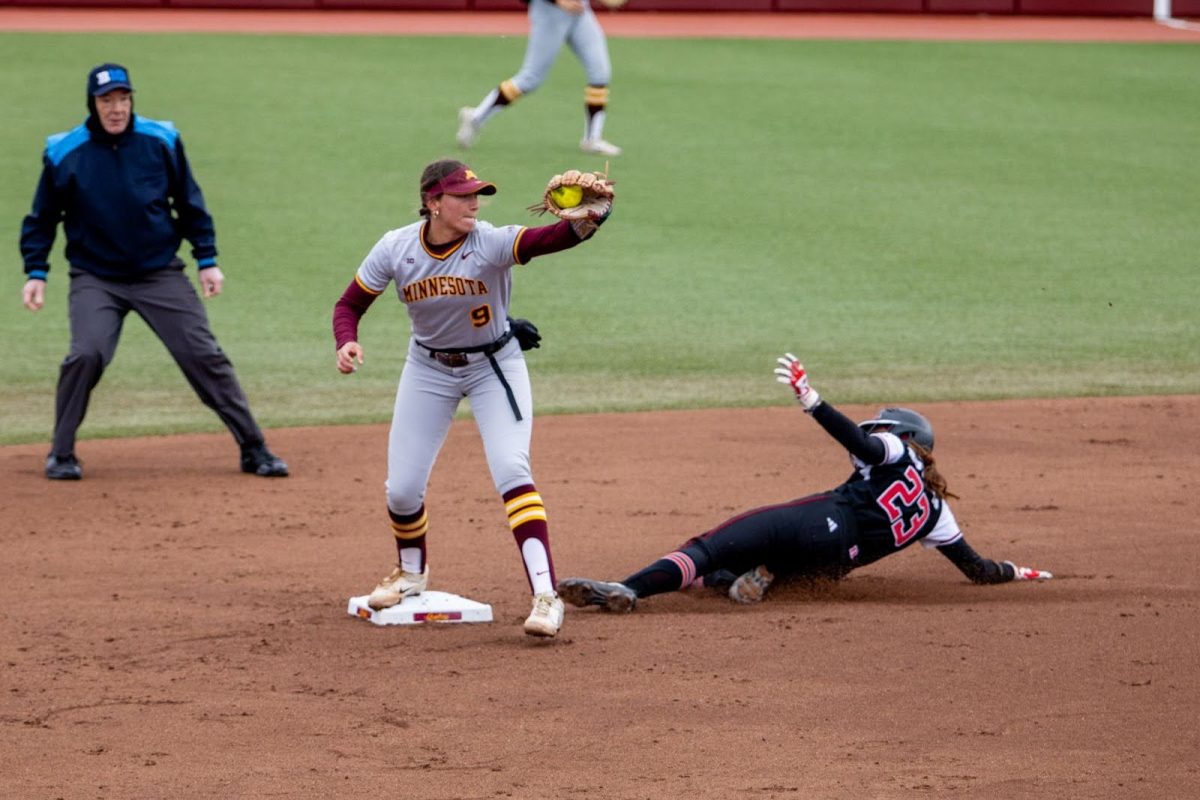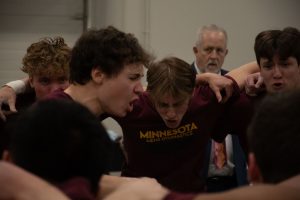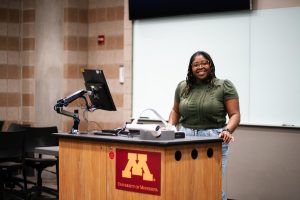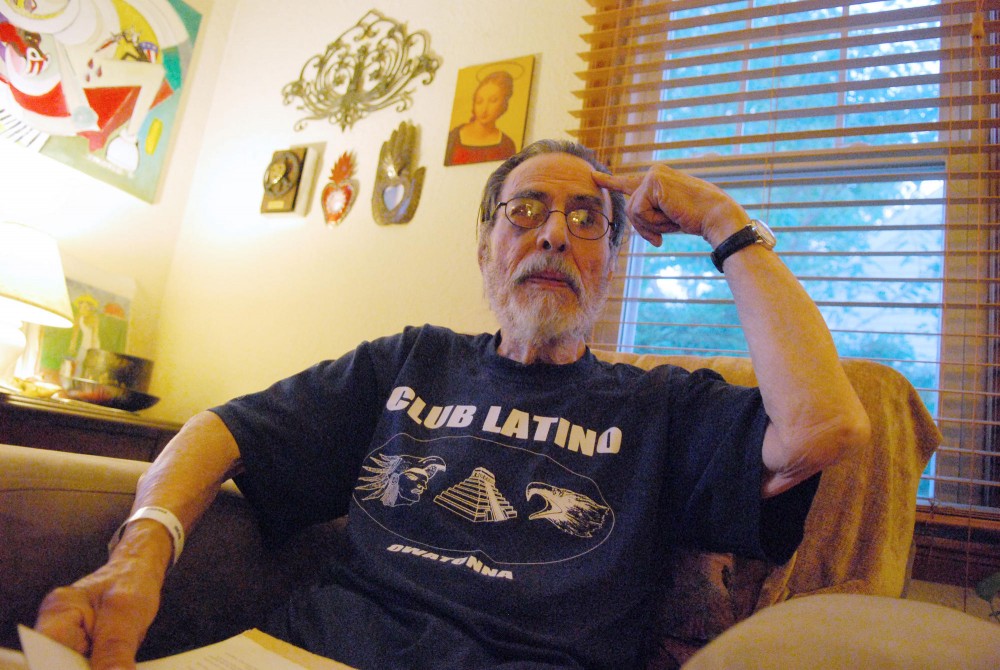Ray Roybal flipped through a notebook in his North Minneapolis living room.
Since having eye surgery two weeks ago, heâÄôs filled its pages with more than four decades worth of names and memories from his history with the University of Minnesota.
âÄúSurgery wasnâÄôt so bad,âÄù he said as he scanned a page for a name. âÄúItâÄôs given me a lot of time to think.âÄù
Many of his thoughts have turned to the state of Latinos in higher education, he said, as the Chicano studies department he helped found at the University begins the year-long celebration of its 40th anniversary.
âÄúWeâÄôve come a long way,âÄù he said. âÄúBut we have a long way to go.âÄù
Students and faculty of schools around the state agree. This weekend, the Minnesota Network of Latinos in Higher Education will meet for its annual summit to discuss the greatest educational issues facing Latinos today.
They will also look back at what has changed since 1968 âÄî when Roybal became the first and only Mexican-American student on campus âÄî up through today. In the spring, the 1,164 Latino students on campus made up about 2.3 percent of the University population, according to the Office of Institutional Research.
âÄúThis generation has to uphold the memories of those who fought for us to be able to occupy these spaces,âÄù Uriel Rosales-Tlatenchi, a senior sociology and Chicano studies student said in the La Raza Student Cultural Center. âÄúBut we also have to be creative and find ways to leave our own mark.âÄù
âÄòRaising HellâÄô
Forty years ago this month, Roybal and 19 other Latino students issued the University administration an ultimatum.
They gave the University 72 hours to take steps toward founding a Chicano studies department and arranged a sit-in at Morrill Hall to draw attention to their cause.
âÄúBlack and brown people had been raising hell all over the countryside,âÄù Roybal said. âÄúWe were looking at that as a time for minorities to make their voices heard.âÄù
The students âÄî members of the Latin Liberation Front âÄî called for more access and support for Latino students in the state.
Their efforts lead then-President Malcolm Moos to make Chicano studies an official department of the College of Liberal Arts in 1972.
âÄúIt needs to be there,âÄù Roybal said about the department. âÄúItâÄôs a special door to the University for our people.âÄù
But Roybal, who used posters and a megaphone to encourage his fellow students during the 1971 sit-in, said the fight is far from over.
âÄòIssues of AccessâÄô
Louis Mendoza will never forget the first time he met Roybal.
Mendoza, who now chairs the Chicano studies department, and serves as president of the Minnesota Network of Latinos in Higher Education, said Roybal was one of the first community members he met when he arrived at the University in 2004.
âÄúHeâÄôs an activist,âÄù Mendoza said. âÄúHeâÄôs always had a very strong presence. Due to his work, weâÄôre able to have a sense of community here.âÄù
But Mendoza said the same question that the Latin Liberation Front raised 40 years ago is still relevant today.
âÄúWe still have issues of access,âÄù he said. âÄúItâÄôs really a national issue.âÄù
At the summit this weekend, he said he expects to continue conversations about the issues that contribute to the achievement gap between Latino and white students âÄî including rising tuition rates, higher admission standards and a lack of Latino student support in K-12 education.
âÄúWeâÄôre thinking about this from every angle possible,âÄù he said.
One of the Saturday sessions is titled âÄú40 years of Chicano-Latino Studies in Minnesota: New Directions, New Challenges.âÄù
Among these challenges is the limited size and reach of this âÄúnicheâÄù department, Mendoza said.
âÄúWeâÄôre a small department and always have been,âÄù he said. âÄúWe need more people in other departments teaching about Chicanos and Latinos.âÄù
Despite the fact that Hispanics represent the largest minority group in the U.S.âÄî 16.3 percent of the population identified as Hispanic, according to the 2010 U.S. Census âÄî the department has only ever had two full-time faculty members at a time.
In its 40 years on campus, it has graduated fewer than 50 majors.
In addition, as the University faces budget cuts and pressure to consolidate, the department is in a state of constant danger, Mendoza said.
âÄúIt is a definite asset that weâÄôre here,âÄù he said. âÄúIt is the only place on campus where we can hear from Chicanos and Latinos and see our impact on this country,âÄù he said.
âÄòWe do belong hereâÄô
Rosales-Tlatenchi said it has been a challenge to make it to his senior year at the University.
The south Minneapolis native said he was put into remedial classes during elementary school because he was bilingual.
He applied and was accepted to the University during his senior year, but since he couldnâÄôt afford it, he spent a year at Minneapolis Community and Technical College before transferring in.
âÄúCollectively, people here who occupy cultural spaces feel like the U is exclusive because it does not represent the population,âÄù he said. âÄúBut we do belong here.âÄù
After he graduates in May, Rosales-Tlatenchi plans to go to graduate school to pursue a masterâÄôs in education so that he can tackle the achievement gap from within K-12 classrooms.
In the meantime, he is tackling it in a different way through his student involvement. He is helping organize an event that will bring Latino student groups from colleges around the Twin Cities together Oct. 15 to discuss ways to work together and issues they collectively face.
He said the same question of access that compelled student activists to occupy Morrill Hall 40 years ago has continued to influence activism today such as the âÄúWhose University?âÄù project he is involved in.
âÄúThere are still many challenges as we see reflected in the percent of Latino students at the U,âÄù he said. âÄúBut because of pioneers like Ray [Roybal], we can begin to find a place at the University and make sure it is more inclusive in the future.âÄù










